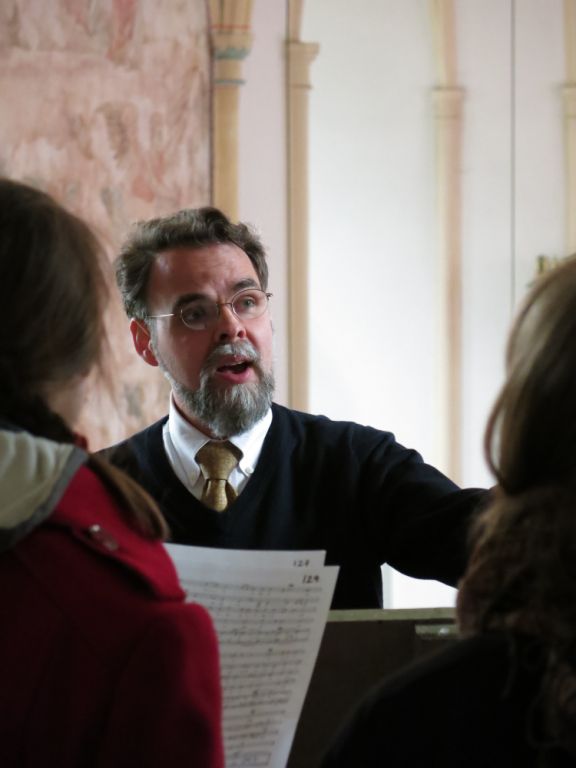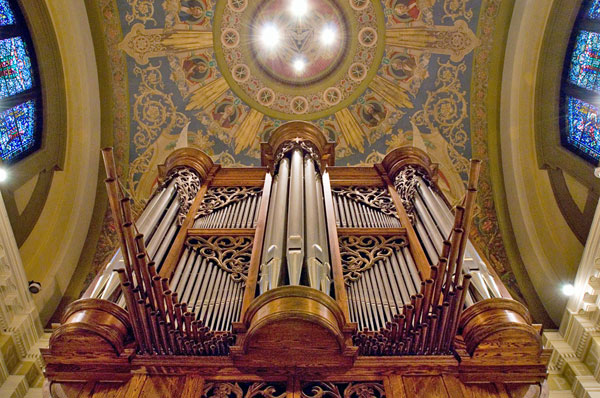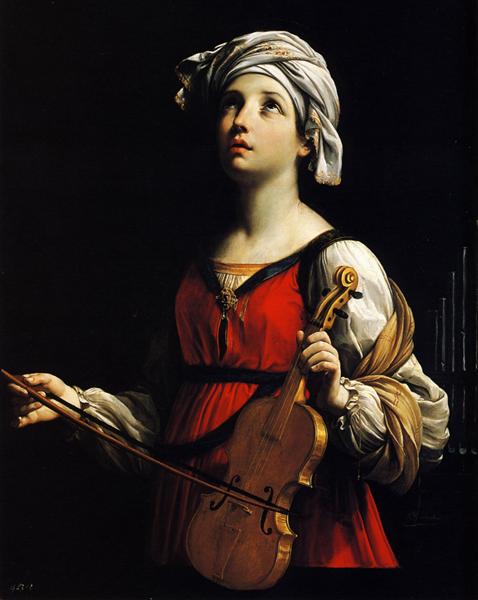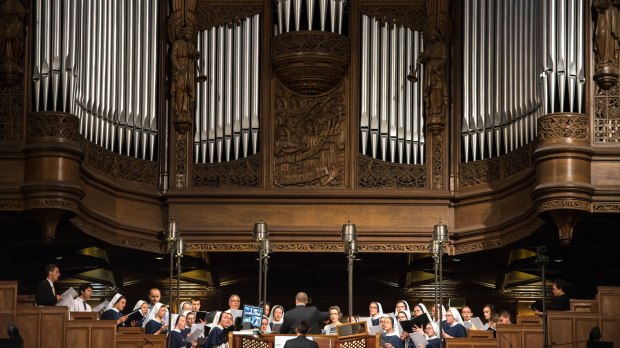To many Catholics – priests and laity alike – the thought of setting aside “On Eagle’s Wings” for something sacred seems like an unattainable dream. But according to one church musician, with a little work and determination, it may not be as difficult as one might think to bring sacred music to your parish.
In this article, we conclude our conversation on sacred music with Dr. Peter Kwasniewski of Wyoming Catholic College. In Part I, we discussed Dr. Kwasniewski’s work as a church musician, and in Part II, the Church’s teaching on sacred music. Here we talk about practical ways Catholic clergy and laity can introduce sacred music into their parish; resources and advice for young people who are serious about pursuing it and learning more; and why there are many reasons for hope.

Dr. Kwasnieswki, there is a practical difficulty when it comes to sacred music, isn’t there? People in parishes where the Ordinary Form (Novus Ordo) is celebrated can be intimidated by what they perceive as the difficulty of singing chant or polyphony.
I’ll admit it can be a little intimidating at first. Modern Western culture is really not a singing culture and is certainly not a high culture anymore; we’ve become simplistic in our tastes and limited in our abilities. The realm of sacred music seems remote, esoteric, difficult. And we shouldn’t kid ourselves: it does require discipline and hard work; anything great does. Man is made for this greatness, and God deserves it. On the other hand, it’s not as hard as you might think, especially if you set realistic goals.
For 50 years we have been not only underestimating the potential of Catholics to learn better music but positively insulting their intelligence with second-rate ditties. I know of people who have actually been driven away from the Catholic Church because of the horrible music! In this way we have deprived ourselves of giving and receiving blessings from one another in the form of music. It’s time that we stopped the musical starvation diet and reached for richer fare.
Can you give examples of “realistic goals” to get us to “richer fare”?
Singing the Ordinary of the Mass is quite an achievable goal and the people in the pews will pick it up, too, since chant is very pleasant to sing, and the melodies are more natural and less demanding in range and rhythm than the vocal gymnastics of contemporary church songs. I’ve been to Mass in many places around the world where congregations are accustomed to singing the Ordinary of the Mass with a surprising amount of gusto. It is our Catholic music, and we can and should be proud of it.
Let’s say you wish to incorporate chant into the Mass. Chants are always sung in unison, so you don’t have to worry about splitting into parts. Those who can sing a hymn melody can learn to sing a Kyrie, Gloria, Sanctus, or Agnus Dei, or a Marian antiphon like the Ave Maria or the Salve Regina. You get together and you start with simpler chants, and you build from there. By the way, it doesn’t have to be accompanied by an organ; I have always found it easier to sing chant without organ because you don’t have to try to coordinate with a musician, and you use your own ears better. There is nothing so uplifting and so refreshingly human as the sound of a church full of people chanting in unison, with no amplification and no instruments.
The Propers of the Mass—the Introit, Gradual, Alleluia, Offertory, and Communion antiphons—are more challenging. They were written by and for trained cantors who know their stuff. There are, nevertheless, simplified settings of the Propers that one can look into for getting started, particularly in the English language. An outstanding example in English is Fr. Samuel Weber’s The Proper of the Mass.
How about polyphony?
Unlike with chant, polyphony requires a group of individuals who are musically talented enough to be able to sing their own part, in good pitch and correct timing, along with others who are singing different parts at the same time. This presupposes at least one competently trained musician who is familiar with the appropriate repertoire and its stylistic demands and who can confidently lead the singers. Even so, communities of any decent size will have the “raw material,” if only someone can lure out the singers and get them to rehearse.
You haven’t mentioned the organ yet. What about its role?
The teaching of the Catholic Church is no less clear: the organ is the primary and most fitting instrument for sacred music in the church, period, end of discussion. This has been taught so many times that it is foolish to dispute it, and the experience of great organ music is the closest thing I know to a totally unanswerable argument of fact. Just as chant and polyphony should be present in every parish and every school, so too should organ music resound in every church and chapel. We need a new generation of organists, well formed musically and well informed theologically, who can add once again the glory of this king of the instruments to our worship. Still, as glorious as it is, the organ is not indispensable to a sacred music program. With one organizer, a few good voices, and adequate pastoral support, sacred music can blossom anywhere.

For young people who are serious about sacred music and what they can contribute, what would you recommend?
The irreplaceable foundation is to become intimate with authentic sacred music. Although you can do this by listening to a plethora of wonderful recordings out there, it is better to get involved with a parish or a religious community that is serious about sacred music. You can be a member of the congregation and soak it in, or a member of the choir so that you sing the music and get to know it firsthand, whether it’s chant or polyphony or traditional hymnody.
The next big step is to attend a workshop of the Church Music Association of America where you will have an “immersion experience” of singing the Church’s great music, learning from teachers who really know how to teach it. The CMAA has an annual Sacred Music Colloquium and multiple chant workshops throughout the year that are life-changing and unforgettable experiences. Meeting and working with many other musicians who are attracted to the same beautiful music is a sovereign antidote to the despondency of feeling “all alone” at times.
The CMAA also has an online forum in which hundreds of musicians participate, asking and answering questions like: “I’m looking for a Mass for my choir but I only have sopranos, altos and tenors. What would you recommend?” I have learned so much over the years from my friends and acquaintances in the CMAA, both at the Colloquium and through online exchanges.
Speaking more broadly, it’s a good idea to visit blogs like New Liturgical Movement and Chant Café in order to keep learning about Catholic culture and the liturgy. We need inspiration and consolation, encouragement and concrete ideas, as we seek to restore the sacred in our own little corner of the world.
You have obviously given a lot of thought to sacred music. Have you written any articles that could be helpful for those who wish to go more deeply into the subject?
Yes, this being something I care passionately about, I have written quite a few articles on the subject, based not simply on academic study but on my entire life as a Catholic—as one who has experienced firsthand, at different points in my life, the mainstream parish, the charismatic movement, the Reform of the Reform, and the traditional Latin Mass. Here are a few of the articles readers could follow up on:
“Pride of Place in the Roman Rite”
“Do We Trust the Church’s Judgment—Or Our Own?”
“Don’t Let the Best Be the Enemy of the Good”
“Is Your Liturgy Like What Vatican II Intended?”
“Why Offer God the Finest of Human Artistry?”
“Sacred Music vs. ‘Praise & Worship’—Does it Matter?” (Part I and Part II)
“Is ‘Contemporary’ Church Music a Good Example of Inculturation?”
“Banish All Guitars and Pianos from the Church”
“Contemporary Music in Church?”
Given everything we’ve talked about, are there reasons for hope?
Recent years have witnessed the reintroduction of sacred music in quite a number of parishes and chapels throughout the world, thanks in large measure to the stirring example and writings of Benedict XVI.
In my experience young people have a hunger for traditional Catholicism and are excited when they discover sacred music. Many of the religious orders that are flourishing are the ones that have maintained or reintroduced Gregorian chant.
Vatican II praised the treasury of sacred music as a greater artistic heritage than that of any other art—which is rather astonishing when you consider the cathedrals, basilicas, statues, monuments, vessels, windows, paintings, poetry, and prose of Christendom. Sacred music tops them all, because it is an integral part of the solemn liturgy. I have seen again and again how musicians who desire to honor the Catholic Faith, connect with its rich history, and ensure its future, are taking this truth to heart. We are living in a difficult and chaotic period, but you can see shoots of green pushing up here and there through the gray volcanic rubble. It is enough to presage the regrowth of a lush forest. Our Lord never abandons His Church but patiently calls us back to the “beauty of holiness” when we have forsaken it.


